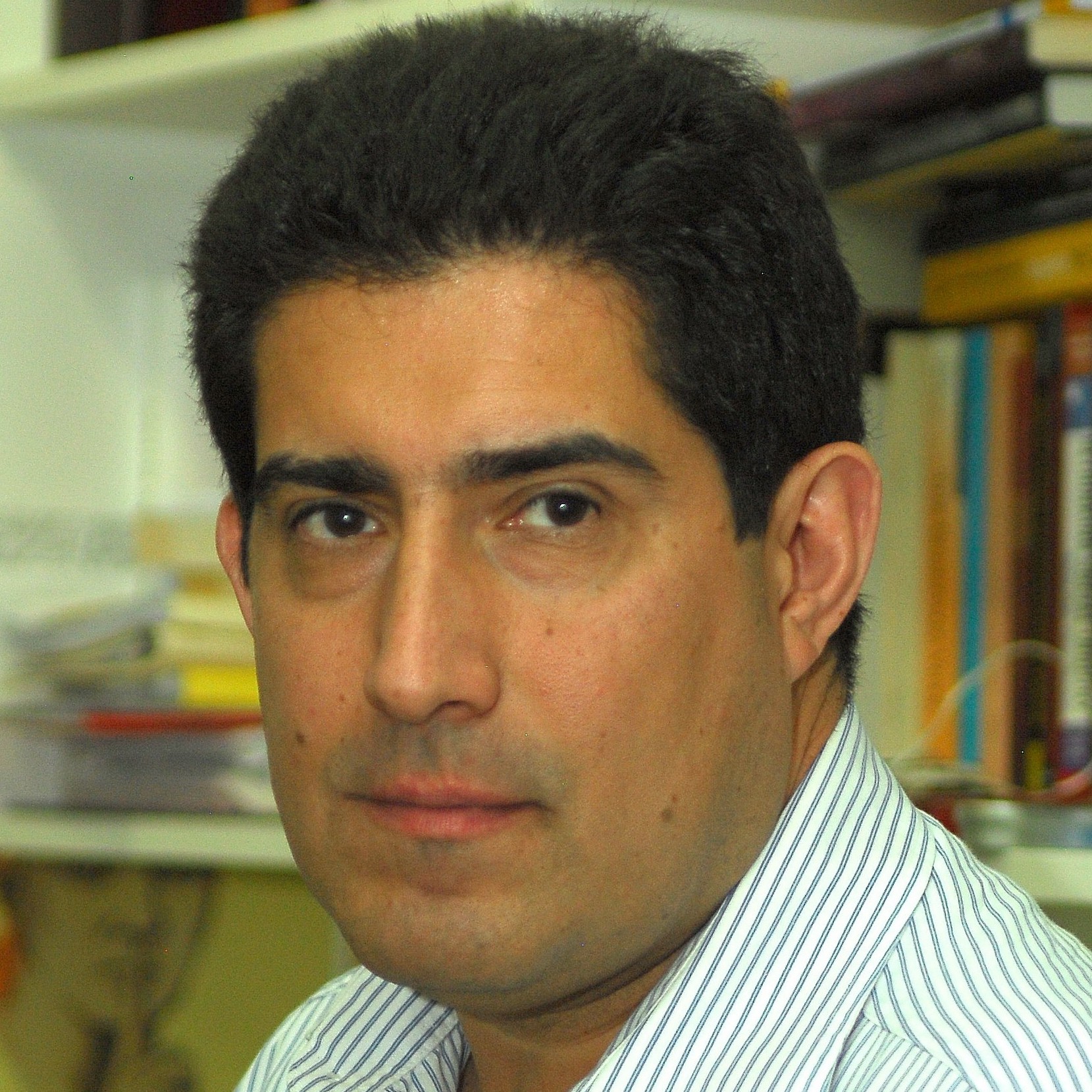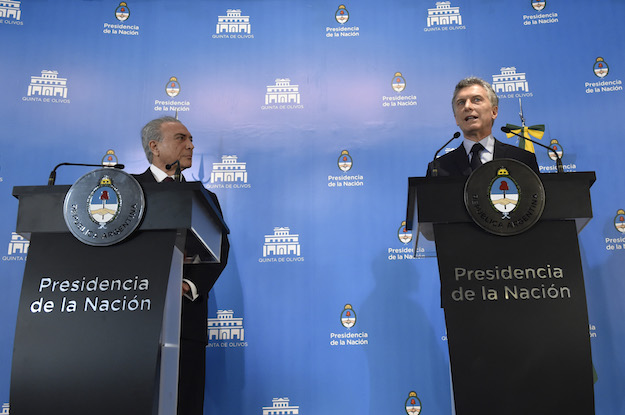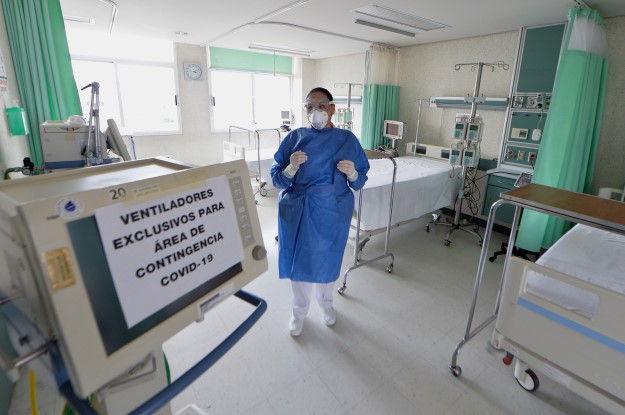Since the commodity boom ended four years ago, right-wing presidents are becoming the norm in Latin America. But their performance in office has been anything but stellar. Why? And what can these governments do to recover before it’s too late?
After a decade in which most countries in Latin America were ruled by left-wing governments, today only Venezuela, Bolivia and Nicaragua neatly fit into that category. In Argentina and Peru, market-friendly candidates Mauricio Macri and Pedro Pablo Kuczynski (PPK) replaced leftist leaders after elections in 2015 and 2016. In Brazil, after the impeachment of left-wing President Dilma Rousseff, her right-of-center Vice President Michel Temer was sworn in for the remainder of the term (2016-2018). Even in Ecuador, though the left retained power earlier this year, President Lenín Moreno is more moderate than his predecessor, Rafael Correa. Pre-electoral polls in Chile and Honduras anticipate new victories for the right. Though a few polls have shown that the left will have a fighting chance in the presidential election in Colombia next May, that country has not elected a true left-wing leader in the past 30 years.
The rightward electoral shift can be partially attributed to the downturn in the economic cycle and the end of the export commodity boom. After more than a decade of favorable terms of trade for Latin American countries, declining prices for commodity exports have put fiscal pressure on cash-strapped governments. Meanwhile, social needs are increasing and the demand for additional government spending keeps rising. As a result, voters have punished left-wing incumbents at the polls.
Yet, so far, the performance of their replacements has been at best mediocre and, in some cases, even disappointing.
It is true that previous, fiscally irresponsible governments left a complicated legacy. New right-wing governments, especially in Argentina and Brazil, have struggled to put the fiscal house in order and to adopt policy reforms that can help restore economic growth. Though voters have been patient, time to show results is running out. The upcoming midterm elections in Argentina in October and next year’s presidential elections in Brazil will be a difficult test.
In Peru, the story is more complicated. When he assumed power in 2016, PPK received a country in much better condition than in Argentina or Brazil. The Alan García (2006-2011) and Ollanta Humala (2011-2016) administrations were nominally leftist, but their policies were mostly market-friendly. PPK was in a much better position to show that right-wing, market-friendly presidents could put the country back on the path of sustained growth. However, after 4 percent growth in 2016, Peru’s economy is only growing at 2.6 percent in 2017.
The disappointing economic performance is partly due to the PPK government’s inability to deal with an opposition-controlled Congress. After receiving only 21 percent in the first-round vote, PPK barely made it to the runoff – which he then won by just 0.2 percent over Keiko Fujimori. But Fujimori’s Fuerza Perú (FP) party secured 73 of the 130 seats in the unicameral Congress. Since late 2016, relations between PPK’s government and the FP have turned sour, as the latter have forced his ministers of education, transportation and finance to resign. Late last month, the prime minister also quit – forcing PPK to reset his young government.
There is a potential path to success ahead. PPK has appointed one of his two vice-presidents, Mercedes Aráoz as the new prime minister. She will have the difficult challenge of finding some form of cohabitation agreement with the Fuerza Popular. Negotiating the humanitarian release of Alberto Fujimori, the 79-year old former dictator (and Keiko’s father) who is serving a long sentence for human rights violations and corruption is one of the hot items on the table. If PPK agrees, he will build bridges to fujimorismo in Congress, but he will further alienate public opinion, especially those left of center. Yet by refusing to negotiate with FP, PPK will risk becoming an early lame duck (with four years left in his five-year term). Whatever road he takes, PPK needs to signal to economic actors that he is still willing and strong enough to push forward reforms to make the country more competitive.
What can others do?
In the absence of a commodity boom, governments desperately need to find other engines of growth. But their room for maneuver is tight. The tough fiscal situation limits the ability to launch a fiscal stimulus package to prop up domestic spending. Improving productivity with investments in human capital could help, but the results would take time. Investing in infrastructure requires public funds and foreign investment. Though market-friendly governments should find it easier to attract foreign investments, they will need to implement tax and labor reforms to attract international capital. Since new right-wing governments either lack legislative majorities or fear a populist backlash, they have refrained from taking decisive action.
That leaves other, more difficult options, such as austerity. Since the state sector grew rapidly during the good years, new right-wing governments can help increase efficiency by pushing modernization reforms. That will certainly provoke a negative reaction among the powerful public-sector unions, but doing nothing is a far worse option.
Right-wing governments should avoid being dogmatic. That was the mistake made by previous left-wing governments. Implementing reforms that promote industrialization and employment works well when done right – think of the program to save the auto industry in the U.S. But pragmatism will also mean adopting reforms to make markets more competitive – that includes privatizing some public-sector bureaucracies.
The stakes are clear: Latin American people believe that left-wing governments were good at distributing the wealth generated in the years of the fatty cows, but they have yet to be convinced that right-wing governments can provide solutions in the years of skinny cows. In most cases, in the good years, left-wing governments failed to prepare for the bad years. Voters threw those left-wing governments out when the slowdown began and elected right-wing candidates because they promised to have solutions for the problems the country faced. Unless they try those solutions – even if that means having people swallow a bitter pill – the recently elected right-wing governments will also be punished by frustrated voters at the polls in the next round of elections.
—
Navia is a contributing columnist for Americas Quarterly, professor of liberal studies at NYU and professor of political science at Diego Portales University in Chile.








